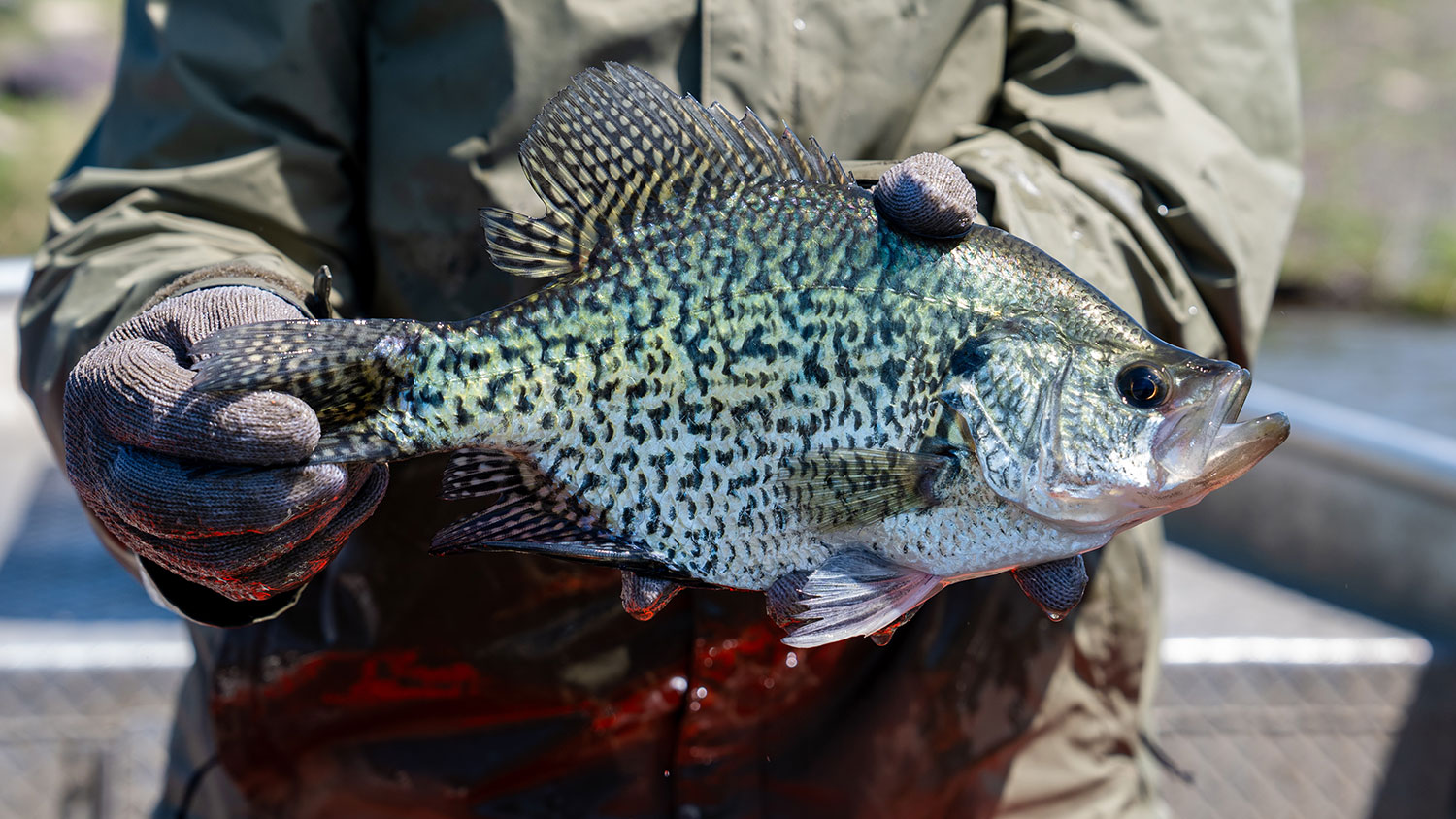The Lure of Crappies
Ron Wilson

North Dakota Game and Fish Department fisheries biologists have for the last 15-plus years set their survey nets in the shallows of Jamestown Reservoir to assess a fish not named walleye that draws anglers from near and far.
“Jamestown Reservoir has been historically and traditionally one of the better crappie fisheries in the state,” said Brandon Kratz, Department fisheries supervisor in Jamestown, of the fish species targeted in the reservoir in late May. “We’ve got good numbers and pretty good quality of fish.”
Prior to 2002, there wasn’t a limit on crappies and anglers could keep as many as they wanted. That year, the Game and Fish Department set the daily limit at 35 fish, and further lowered it to 20 in 2006 and 10 in 2014.
“The reason we did that was some of the data that we collected suggested that we had good survival of crappies, not good recruitment. In other words, the fish don’t recruit to the population every year, but they tend to live long here so you can spread the wealth out over a longer period of time,” Kratz said. “That’s one of the cool things about Jamestown Reservoir, as well as the good spawning substrate for crappies. They’re successful every year in spawning for the most part, yet it’s the first winter that they have difficulty making it through.”
Kratz said when the Department set the 10-fish limit, anglers were supportive of the move.
“We found that when we have no limit or a liberal limit, anglers were fishing down those fish pretty fast,” he said. “And once we found that they lived longer and they were available year after year and not dying naturally, by lowering that limit and spreading that out, we have a more consistent fishery rather than the boom and bust as it used to always be. People tend not to like to have a great year one year, and then they make all the effort to plan a trip to a place the next year, and then they don’t catch anything. When you can have a little more stability, it’s usually better.”
Fisheries biologists set their nets in late May when the crappies were in shallower water and accessible. The trend information they seek from the population includes growth rates, length and weight, condition of the fish and sex ratios.
“Back in 2008 we dedicated a survey for the crappie population because we figured it was a pretty important resource … it’s one of the unique opportunities in North Dakota because we don’t have a lot of crappie fisheries,” Kratz said. “So, we focused more on trying to target those fish when they’re most susceptible to being caught, which tends to lead to better trend information so you can monitor the population a little better. And then we can evaluate whether our current limits and limits of the past were the right or the wrong thing to do and manage the fishery appropriately.”

The paperwork that comes with assessing the crappie population in Jamestown Reservoir.
What is it about Jamestown Reservoir that makes it such a good crappie fishery? Kratz said the reservoir is unique in that it produces a lot of plankton in summer, a go-to food source for smaller fish.
“While that food source is plentiful, our growth rates after about age 6 start to suffer, and they start to plateau out because plankton is good for smaller fish, but it takes a little bigger forage to grow fish quickly to bigger sizes,” he said. “In combination with the abundant plankton is the spawning substrate … it’s fairly clean and there’s some gravel and shale that make for good crappie rearing areas. And then, of course, the flooding of the reservoir when the water gets high produces productivity that drives the food chain.”

